It's hard to believe that three years ago, today, we packed up ten years worth of memories from our tiny urban condo on "Bunny Smith Square" (between Harvard & Central) and moved to a townhouse on the north side of Harvard Square. In some ways, it feels like I just moved in. After all, we lived in our tiny urban condo (10 years!). Our time here almost feels like a mere afterthought.I have tons of nostalgic memories of my old neighborhood.
Yet honestly speaking, I love my new house and neighborhood. Having a gas stove for the first time ever totally changed my life. I'm not sure if I could ever go back to electric. The larger space is great for entertaining, and I've had tons of fun cooking all sorts of fun dishes (not to mention all the tasty things we've made on Bryan's crazy high heat grill), for friend who come over for dinner.
It's nice to finally have my own laundry machine. And the increased sunlight from our tall floor-to-ceiling windows is something I'd have trouble giving up now.
Oh, and having Formaggio Kitchen and some of the best cheese in the universe just down the street?
Dangerous, but oh-so-fun.
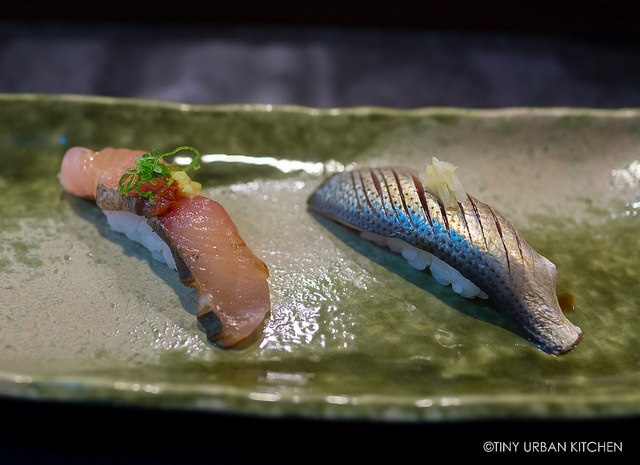
But there is one thing I miss dearly from my old neighborhood.
For years, Bryan and I really enjoyed having casual Sunday dinners at Cafe Sushi, a tiny little Japanese family-owned sushi shop that was a mere 5-minute walk from our place. It was simple - nothing fancy - but they had solid sushi that they sold for $1 a piece on Sunday nights.
I'm not sure exactly when it happened, but around 2008, Seiji Imura, the son of the family, took over the kitchen of Cafe Sushi. In March 2010, Cafe Sushi started to experiment quietly with monthly, seven-course omakase "Chef's Dinners." These were a huge hit, and really allowed Chef Seiji to go all out in his creativity.
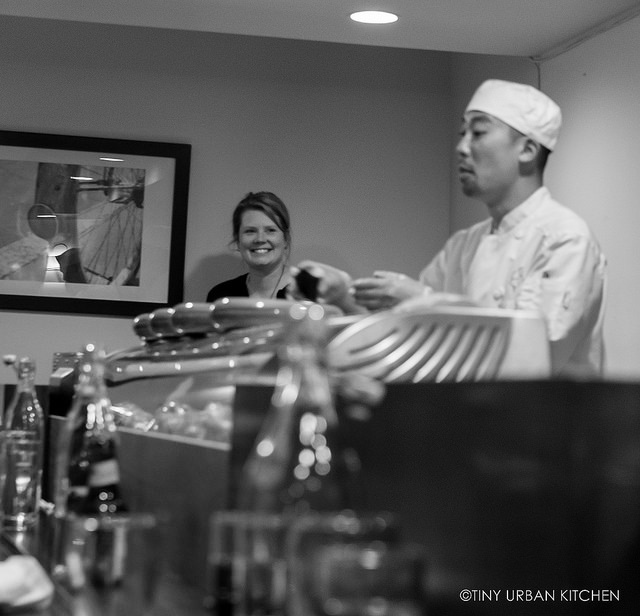
Chef Seiji (front) and his wife Mindy (back)
The omakase eventually made it on the menu. Cafe Sushi stopped its long tradition of Sunday "dollar sushi", and started to move the restaurant into a bold, new direction. Although some of the staple menu items remained, Chef Seiji began incorporating more and more interesting and creative additions, such as a chalkboard full of seasonal fish (often from Tsukiji Fish Market in Japan!), nigiri with more interesting ingredients (like yuzu kosho, smoked salt, or house-cured kombu), and vegetarian sushi that you'd actually want to eat.
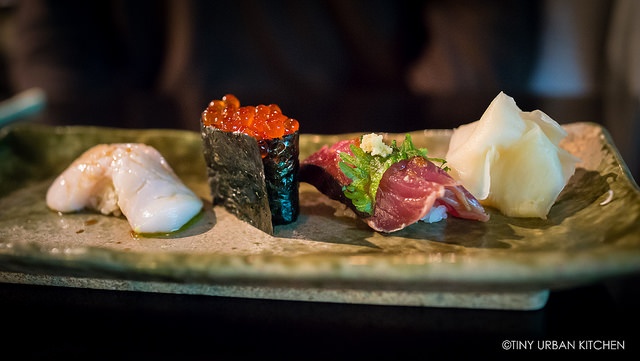
Now, word is finally getting around about Cafe Sushi's transformation. They've won Best of Boston, Sushi for two years in a row (2013 and 2014), beating out traditional favorites like Oishii and Fugakyu.
Cafe Sushi is now my favorite sushi restaurant in all of Boston.*
Every time I've gone there, I've been blown away by the food. Keep in mind, I've mainly ordered from the specials on the blackboard or gotten the omakase. I believe that is the best way to fully enjoy the best that Cafe Sushi has to offer. If you stick with the ordinary stuff (e.g., California rolls, salmon-avocado rolls, tuna nigiri), you'll have a fine experience, but it won't nearly be as special.
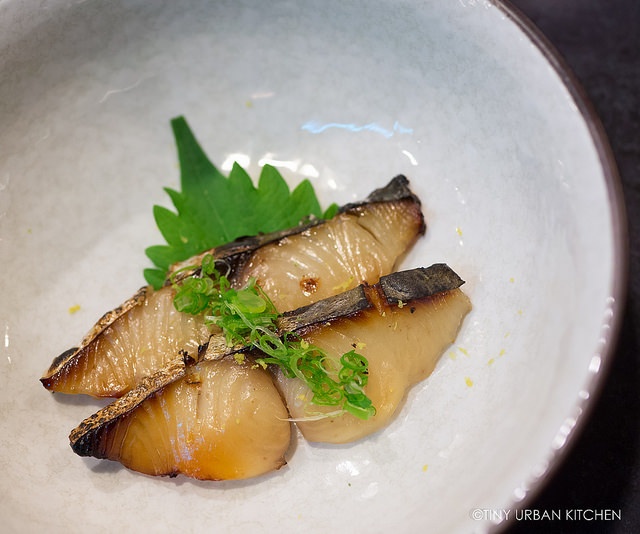
Instead, try some of the Signature Creations, or get a Chef's Sample.
The "In Season" list is fun too. I've been to Japan numerous times, and Cafe Sushi's menu reminds me most of Japan, including favorites such as aji (horse mackerel), katsuo (skipjack tuna), and sawara (Spanish mackerel).
Another favorite of mine is actually a vegetarian nigiri - the Seared Avocado with truffle oil, salt, and lemon juice (pictured below), which is phenomenal.

If you have the stomach space, I highly, highly recommend the omakase. Even though the regular signature items are fantastic, the omakase gives you access to the best and most exclusive items they have. Oftentimes, they may not have enough of something to serve on the regular menu. In those cases, only the lucky omakase diners get to enjoy it.
The omakase is "market price", but has typically hovered around $70 - $75 when we have ordered it. I consistently find it to be a crazy good value in view of the quantity of food, quality of ingredients, and skill of execution.
OK, enough about the facts. Here's an example of one of our omakase meals!
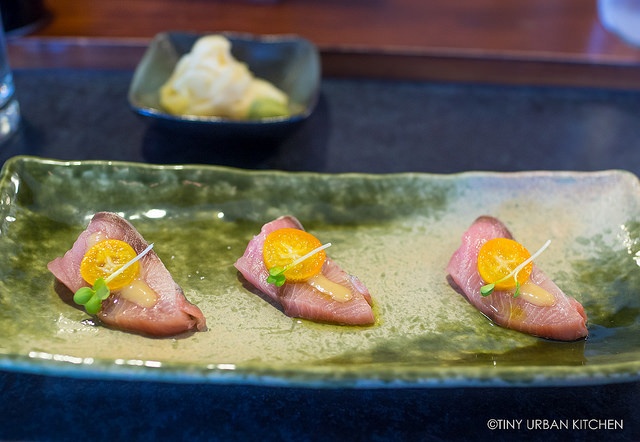
We started with buri (Japanese yellowtail) which was topped with candied kumquat, miso horseradish, and a daikon sprout. The fish was excellent quality. Because I'm not a huge fan of kumquat, I did not love this combination. Bryan thought it was delicious.
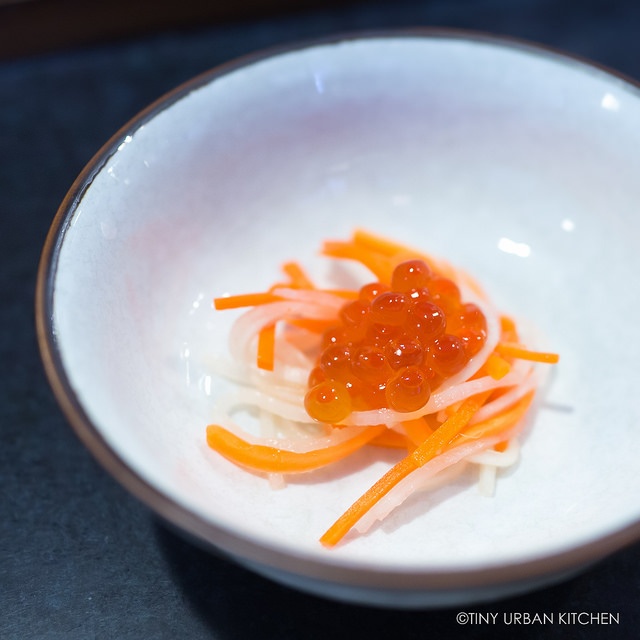
I loved this refreshing next course: shredded daikon and carrots were pickled with kumquat and salmon roe. In this case, I really loved the bright and tart flavors of the vegetables, which offset the fresh and salty ikura (salmon roe) very nicely. Overall, the dish was surprisingly not that salty, which was great.
We then got a plate of four different nigiri.
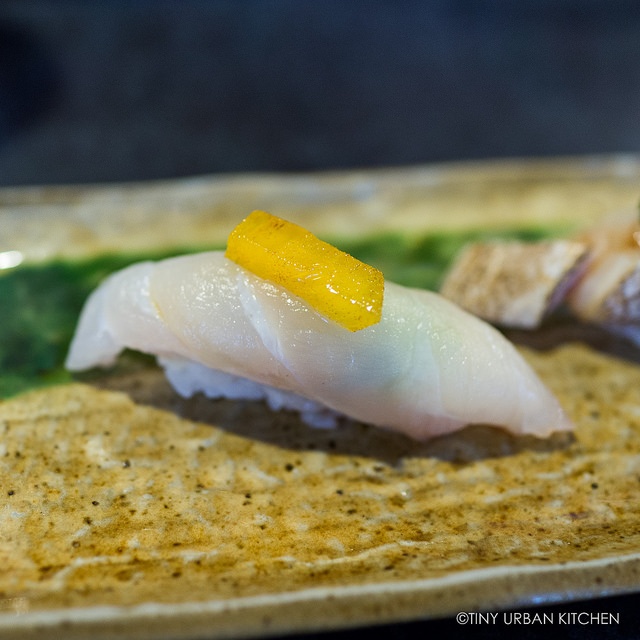
We started with Virginia Tilefish topped with fuyu persimmon and shiso.
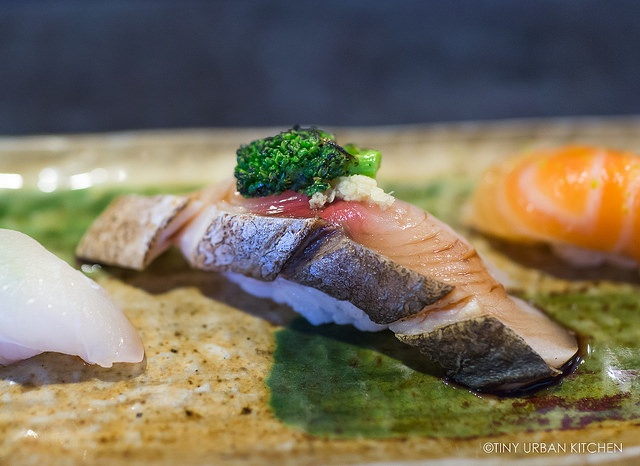
Next, we had Sawara (Spanish mackerel) from Virginia served with ponzu, wasabi oil, and broccoli rabe.
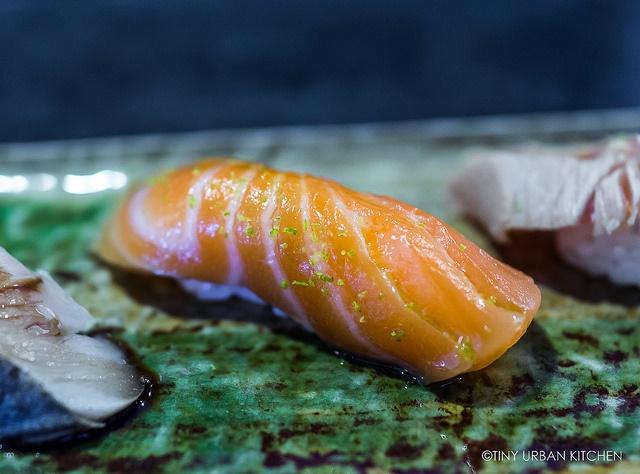 One of my favorites was the Tea Leaf Smoked Tasmanian Salmon topped with yuzu and wasabi oil.
One of my favorites was the Tea Leaf Smoked Tasmanian Salmon topped with yuzu and wasabi oil.
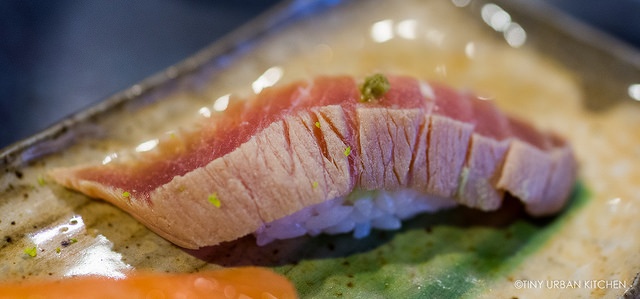
Finally, we had a slice of Zuke, their house-cured tuna topped with just a bit of yuzu kosho.
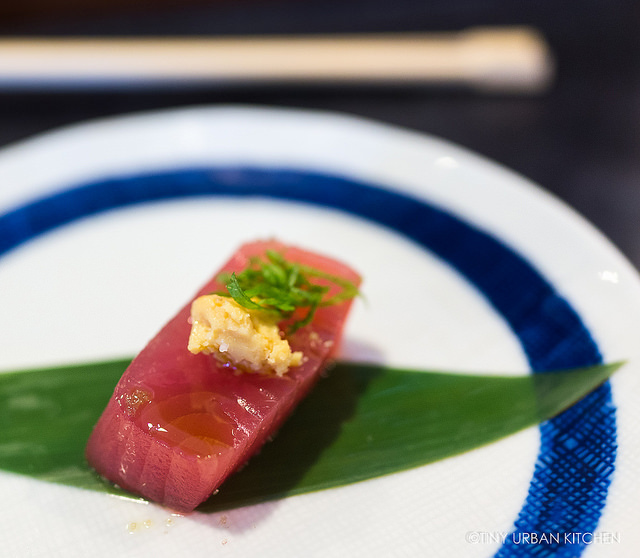
We then enjoyed Tuna with "tofuru" and wasabi. Tofuru tasted a lot like Chinese fermented bean paste, the kind that comes in cubes in Asian supermarkets that you eat with congee. The Japanese name sounds similar to the Chinese word (we call it "dofuru"), so I'm guessing it's the same stuff. I would have never thought to put it on raw fish, but it works surprisingly well, adding a lot of creamy and salty umami flavor.
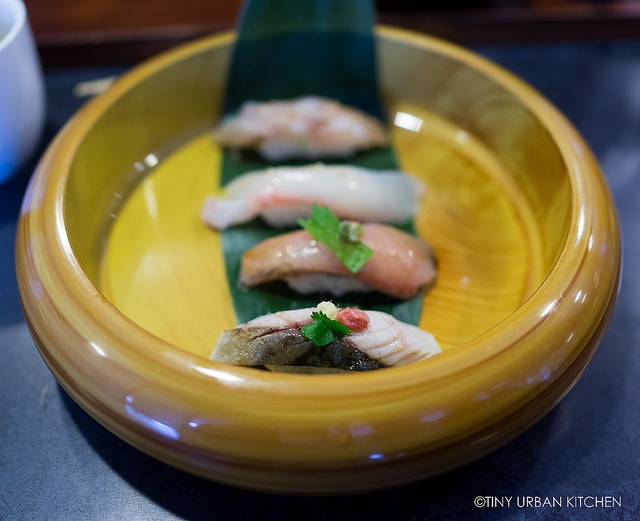
Next came another dish full of four more nigiri pieces.
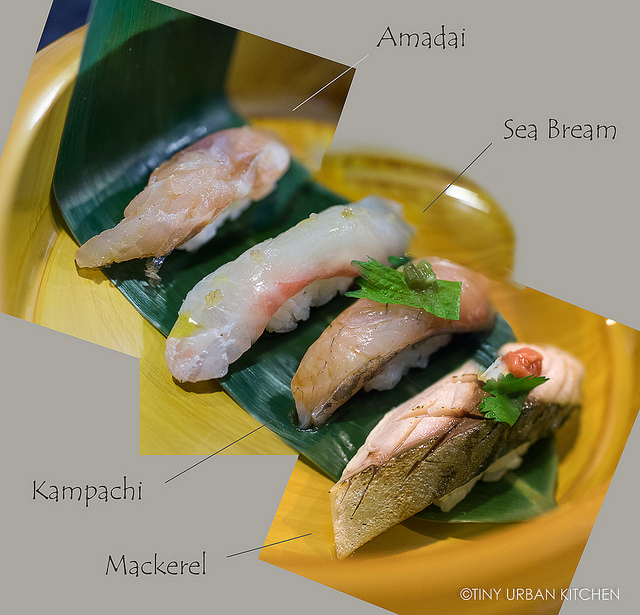 From left to right: Kombu-Cured Amadai (tilefish) topped with katsuobushi, Sea Bream served with sea salt, wasabi oil, and lemon. Kampachi (yellowtail) served with shiso and wasabi, and Mackerel topped with cilantro and horseradish.
From left to right: Kombu-Cured Amadai (tilefish) topped with katsuobushi, Sea Bream served with sea salt, wasabi oil, and lemon. Kampachi (yellowtail) served with shiso and wasabi, and Mackerel topped with cilantro and horseradish.
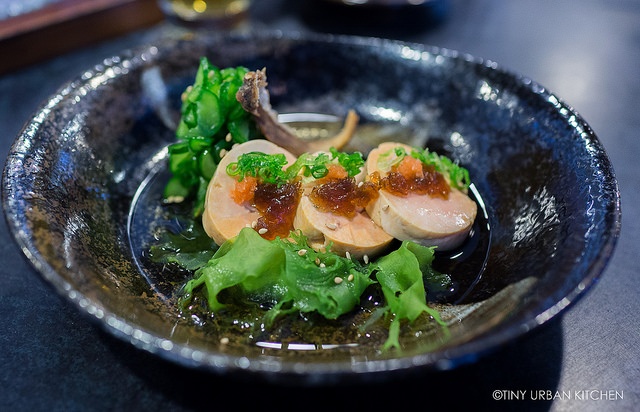
The next course was Ankimo (monkfish liver), served wih ponzu jelly, various types of seaweed, and fresh, house-pickled cucumber tsukemono. It came in a light, clear seaweed flavored cold broth.
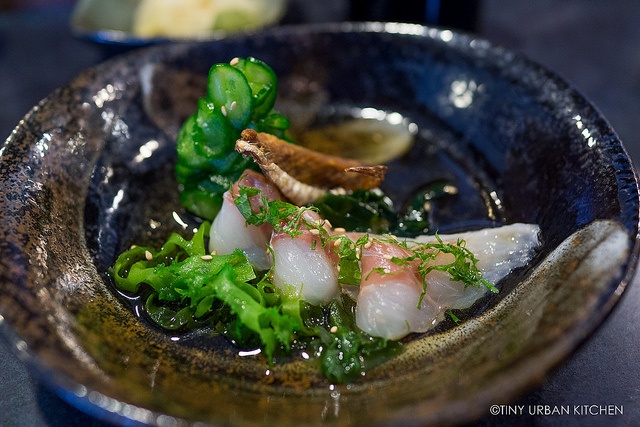
Because I had told Chef Seiji that I didn't love liver in general, he gave me an alternate version using Branzino instead. There were three pieces of raw sashimi as well as a deep fried collar rib.
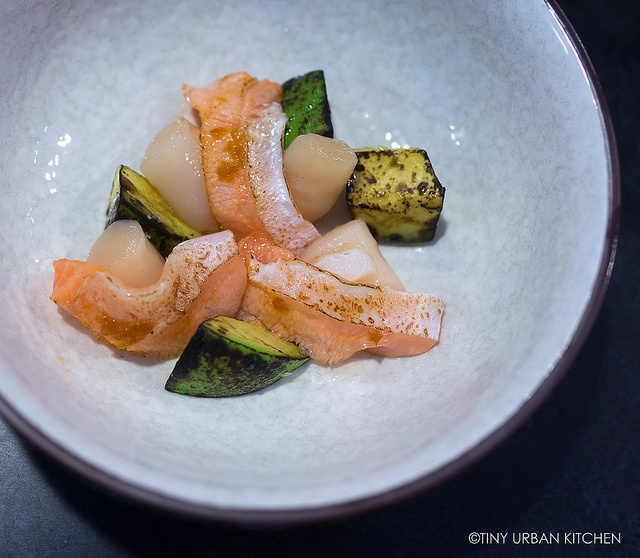
Another favorite was Salmon Belly, which came with grilled avocadoes and Nantucket bay scallops in a light ponzu sauce. I loved the fresh, sweet scallops, the soft, fatty salmon belly, and the smoky grilled avocados. They made a beautiful trio of flavors.
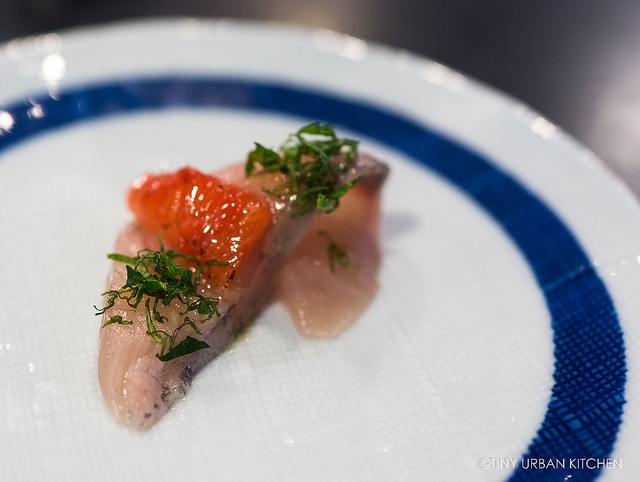
Our last nigiri: Kampachi (yellowtail) topped with mint and blood orange.
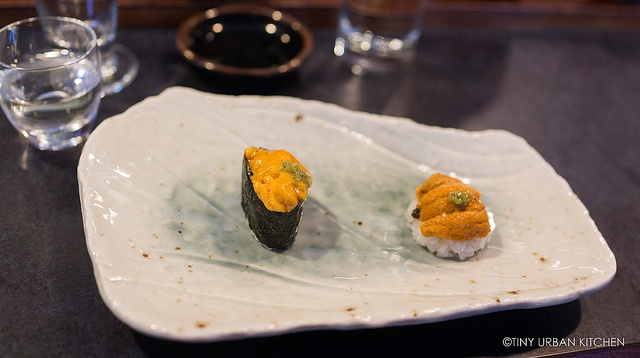
Finally, we had a fun uni two-way tasting. On the left is Santa Barbara Uni; on the right is Maine Uni.
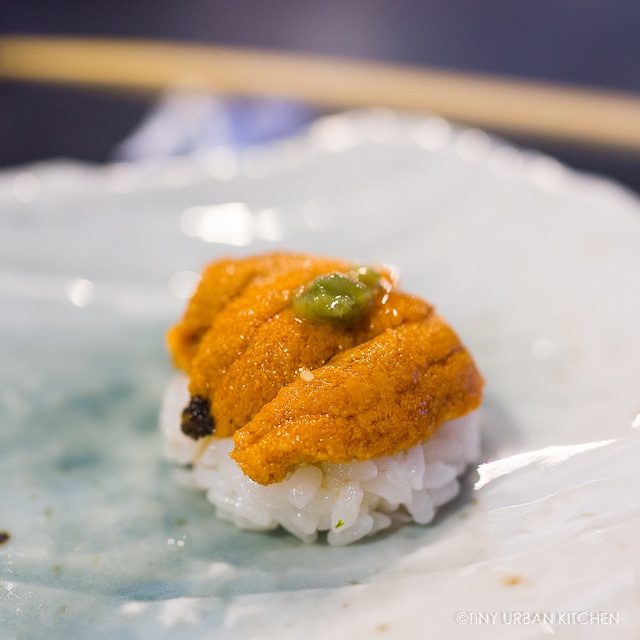
I had told Chef Seiji that I didn't like Maine uni as much from my limited exposure to it. Chef Seiji personally thought that the Maine uni here tasted better, but in deference to my opinion, he gave me just a little of the Maine uni to try.
After trying both, I definitely agreed with him. In this case, the Maine uni was superior. I sheepishly asked for the other half of the uni, which he kindly gave to me.
Lesson learned: always trust the chef. Sure, you might have some preferences, but in my experience, more often than not it's better just to let the chef decide what's best.
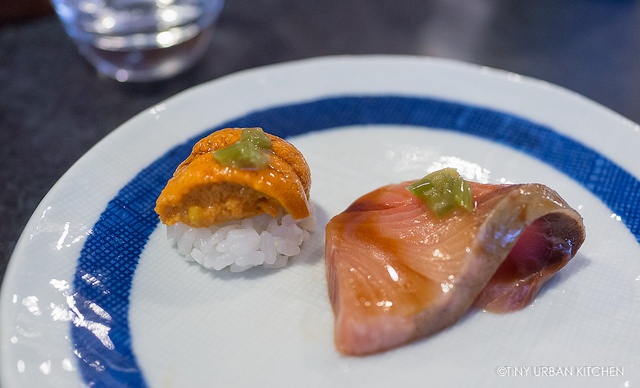
Above is a second half of my Maine uni. Chef Seiji was also nice enough to give me another slice of the yellowtail, this time without kumquat since I had told him I didn't love that first course. I thought that was really considerate of him.
He seems really passionate about his art, and really wanted to me enjoy every course. He was working hard within my preferences to try to achieve that, which I really appreciate.
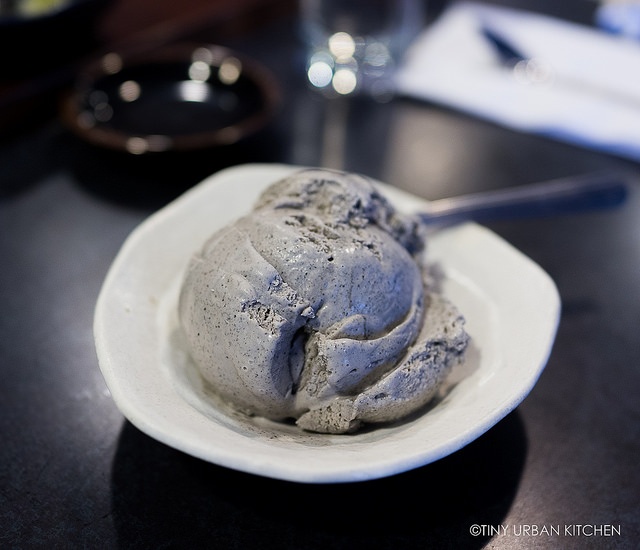
Dessert is included in the omakase.
Above, Black Sesame Ice Cream from Christina's Ice Cream in Inman Square. The ice cream was pretty good, almost as good as mine (hee hee, just kidding . . . sort of).
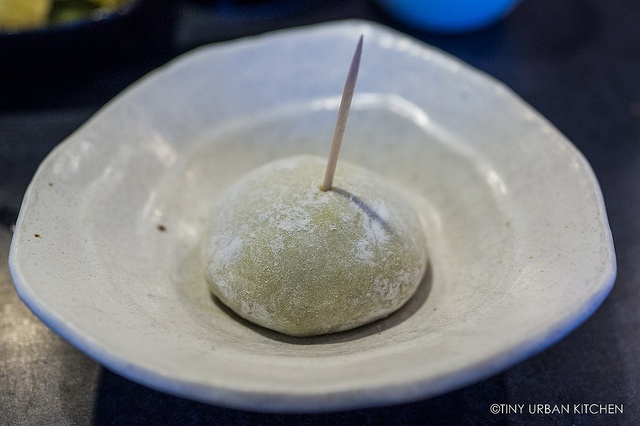
Green Tea Mochi Ice Cream was solid and a nice refreshing way to end the meal.
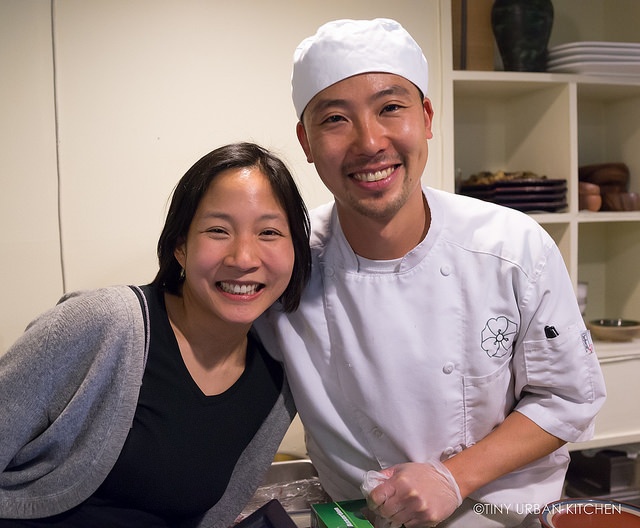
I am a huge fan of this newly revamped Cafe Sushi and I've gone back several times in the past twelve months. Usually, we can't resist but order the omakase, but there have been times when I just didn't feel like eating so much. In those instances, I just ordered off of the Signature and/or In Season sections of the menu.
The Signature Creations run between $3-$4 on average (per piece), while the in-season fish can vary, anywhere from $3 to $6 a piece. Considering that you could be getting the equivalent of 20+ pieces in the omakase (plus access to some stuff that's not even on the menu and dessert), you can see why $70 is a good deal compared to a la carte prices.
You can also get a sake pairing for $25, which feels much more accessible than your typical wine pairing price.
All in all, I just love going to Cafe Sushi. The food is excellent, the staff is friendly, and Chef Seiji is really passionate about his craft. Time to time, Bryan and I will try a highly recommended sushi place, only to say, "well, it was good, but not as good as Cafe Sushi."
Though I don't live right in this neighborhood anymore, perhaps I should still consider myself very lucky that my favorite sushi restaurant in the entire state (and maybe all of New England) is still only a 20-minute walk away from my house.
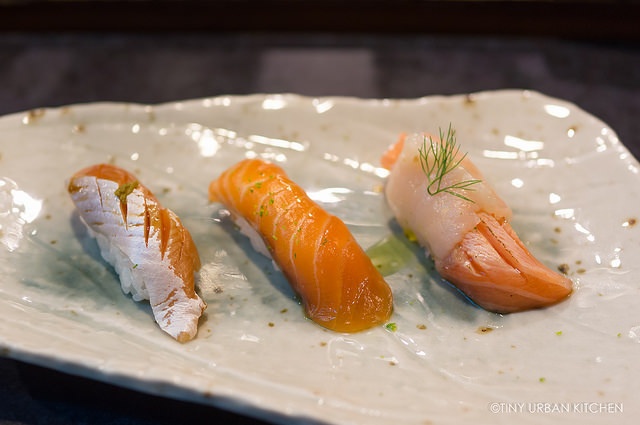
*Please note that I'm excluding places like O Ya and Uni when I make this statement, because I don't think of those places as Japanese sushi restaurants. They are more like high end fusion restaurants that incorporate raw fish and other Japanese ingredients into their high end creations.
Cafe Sushi
1105 Mass Ave
Cambridge MA

All Rights Reserved









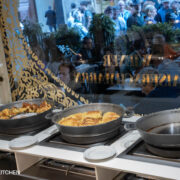
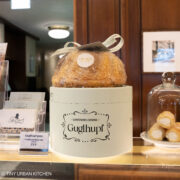
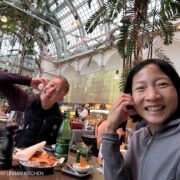
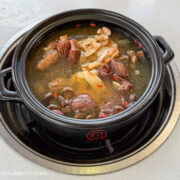


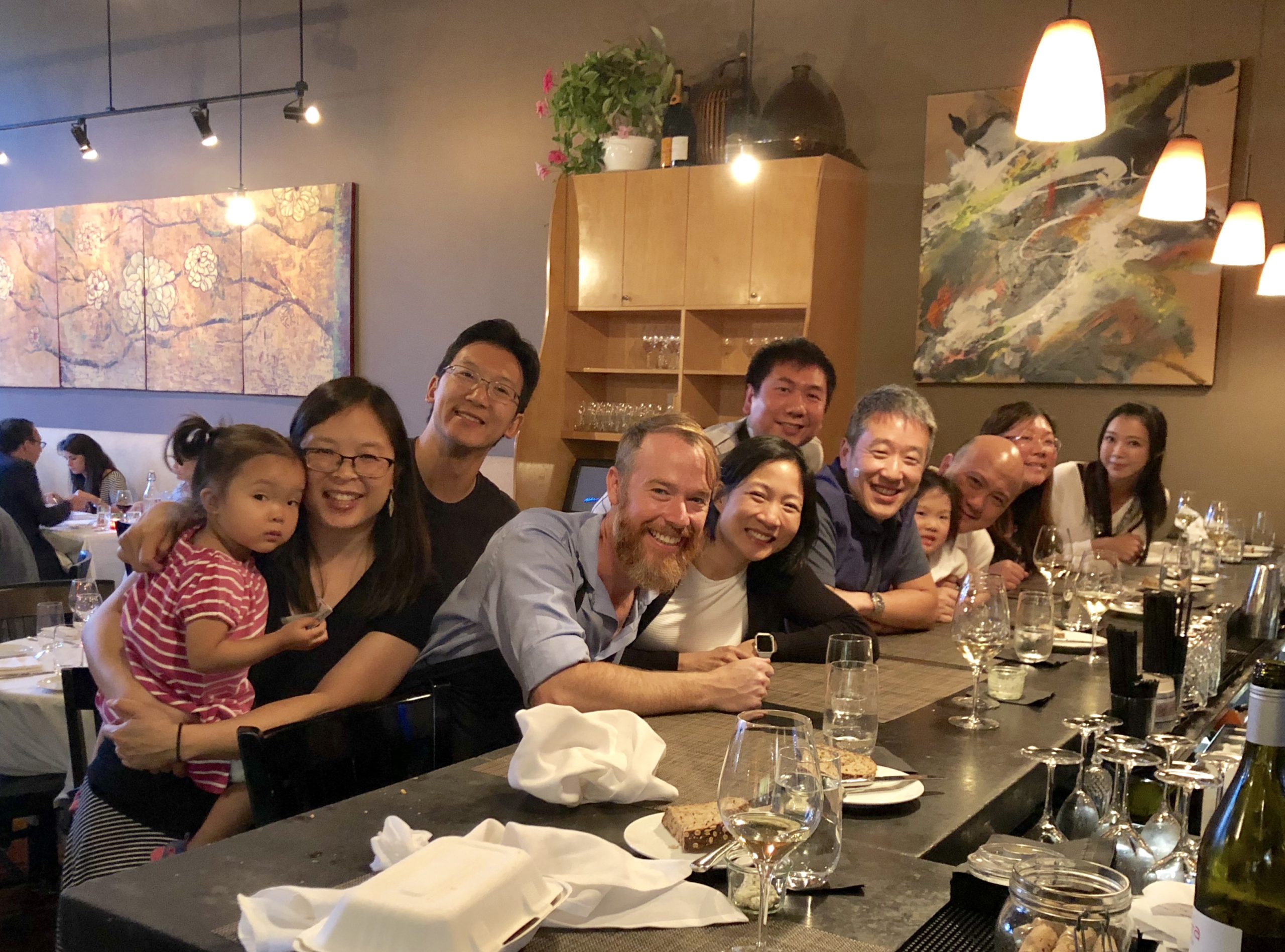
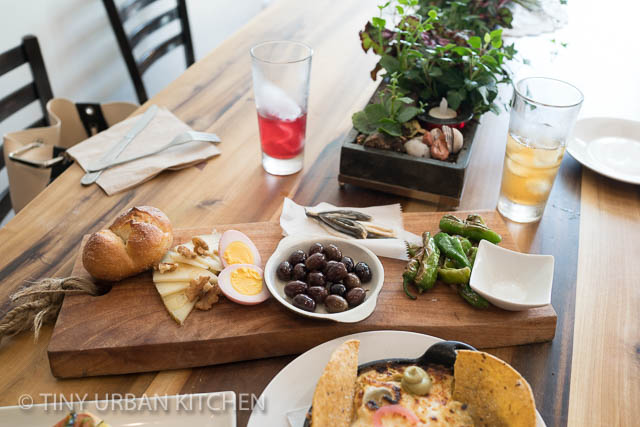
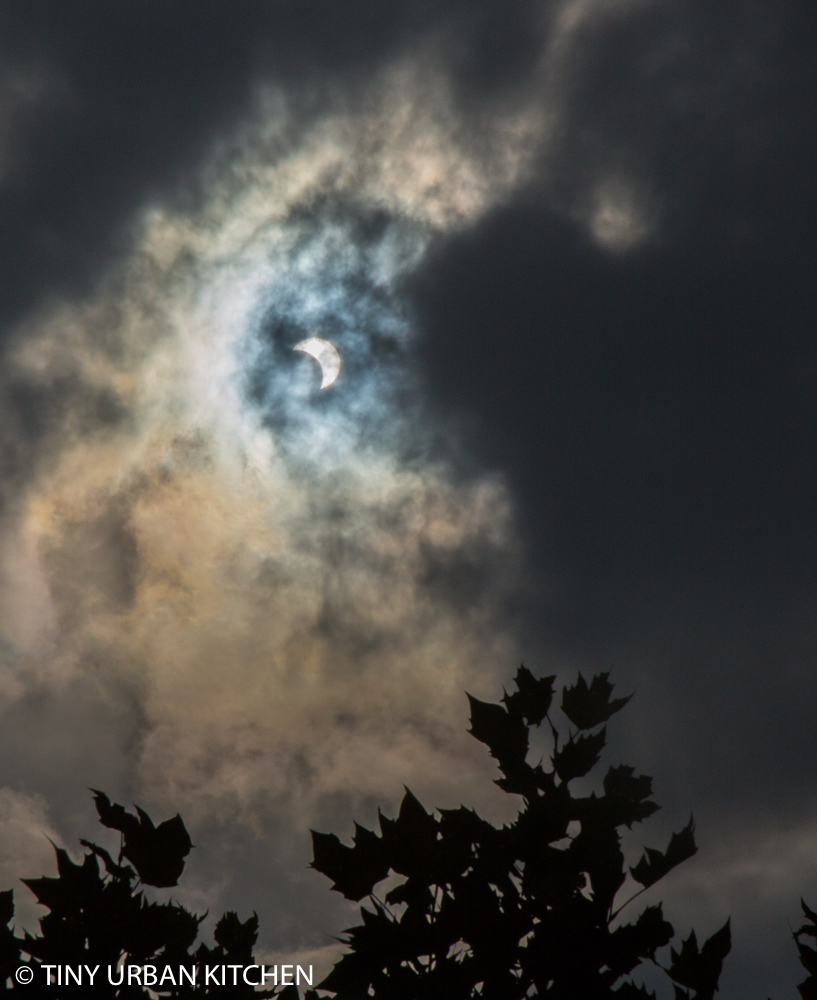
[…] sushi, we typically head to Cafe Sushi in Cambridge. The simple sushi restaurant known for its Sunday “dollar sushi” for […]